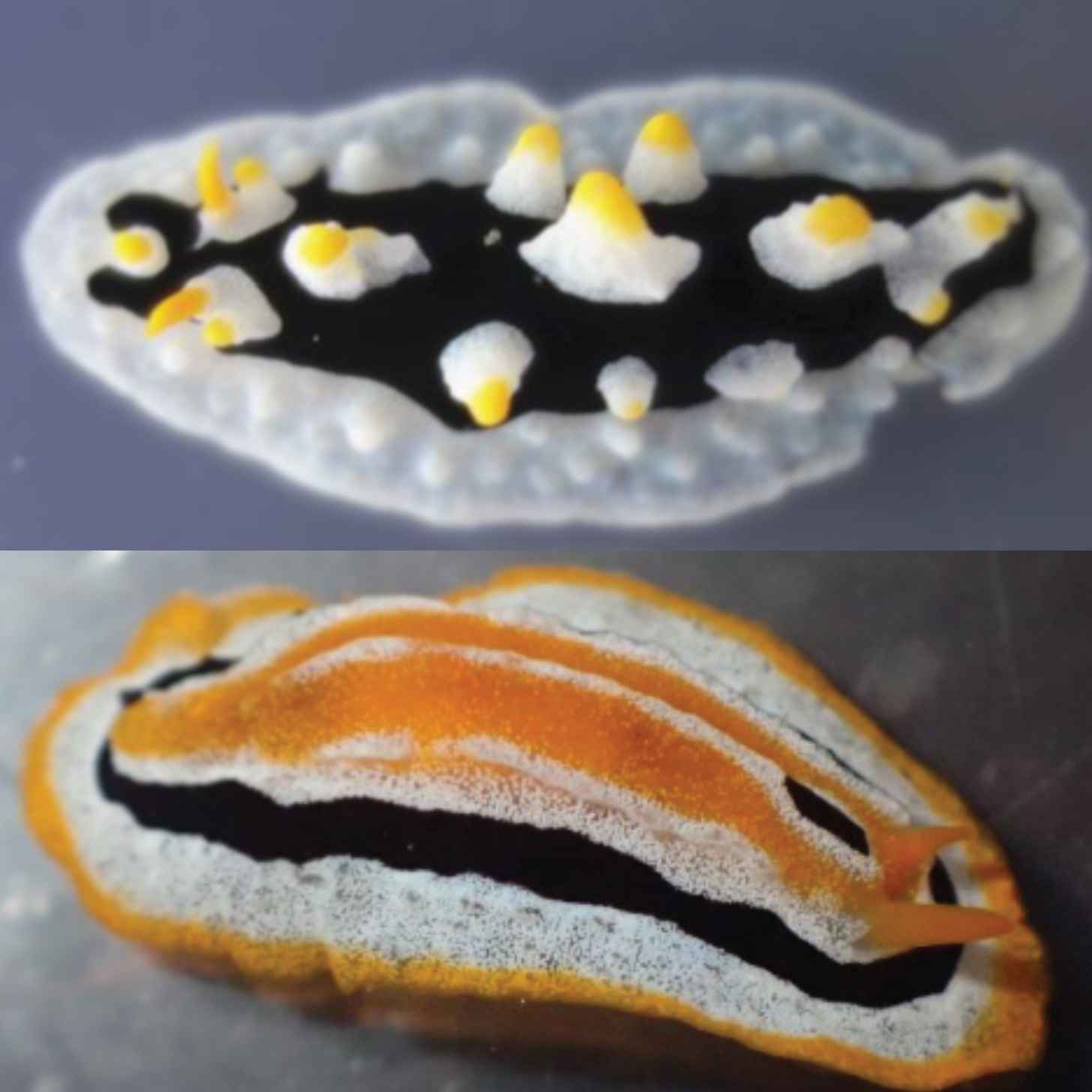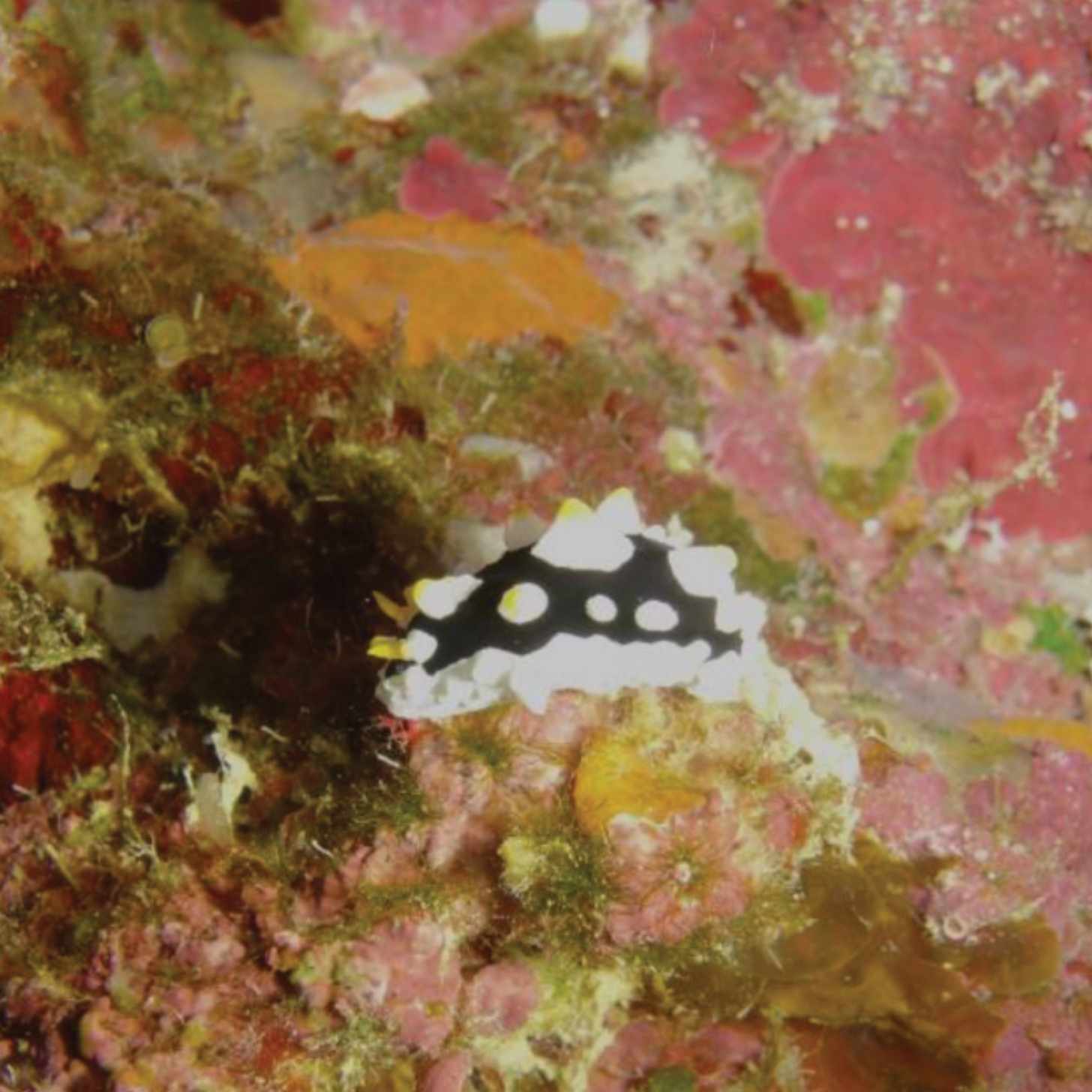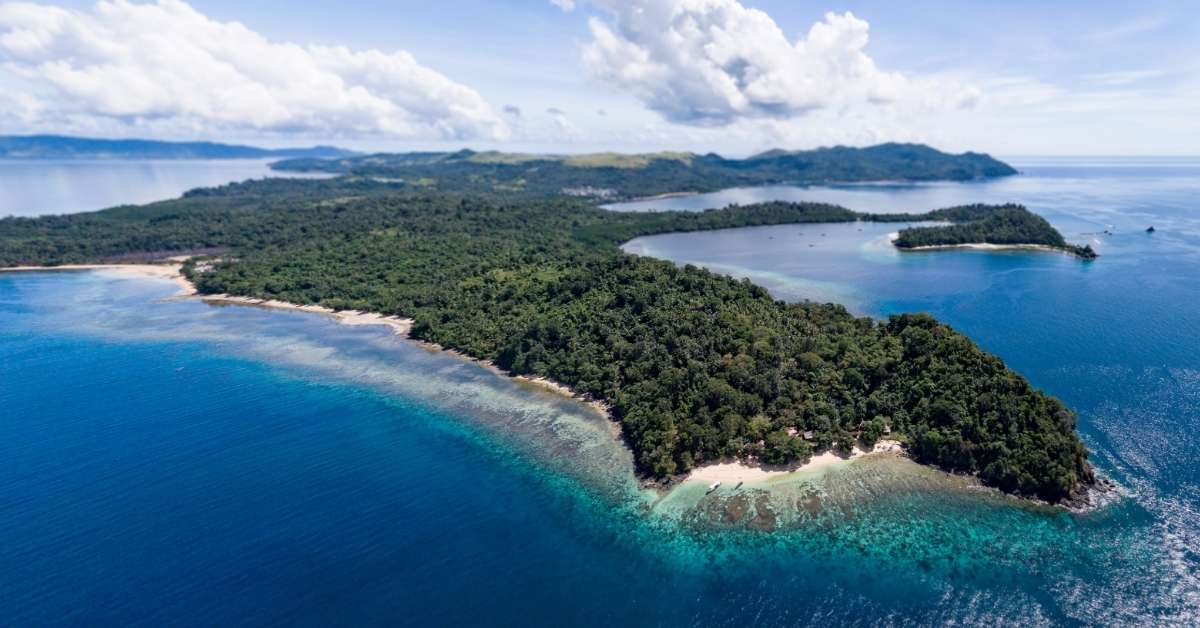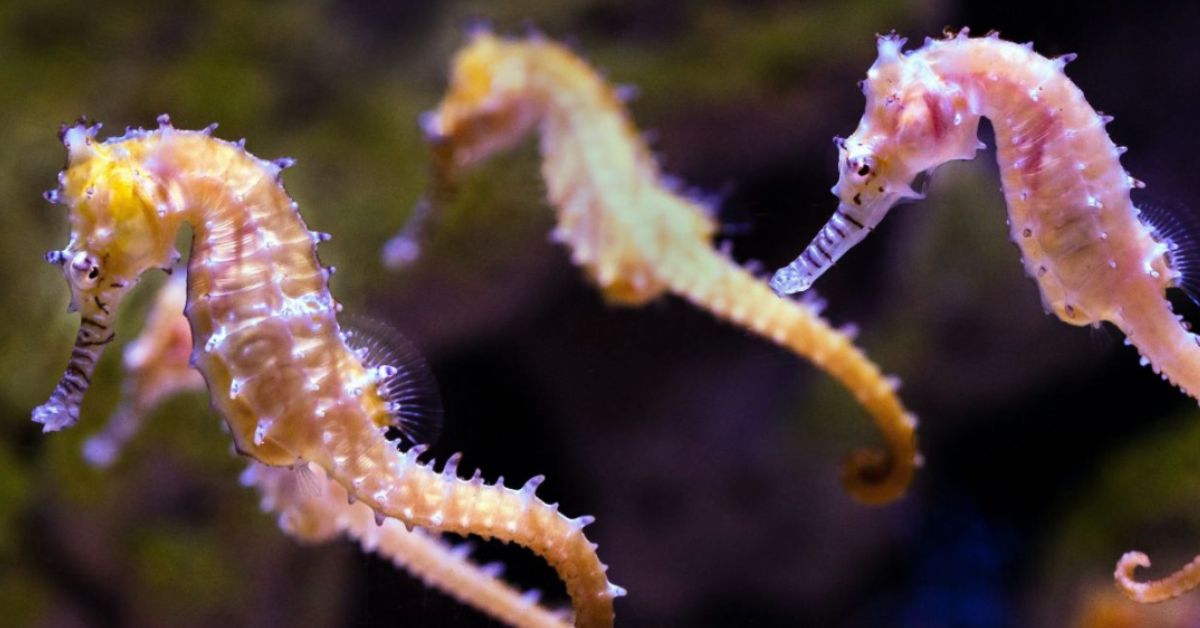The Coral Triangle is the largest system of marine protected areas in the world. Home to more than 500 corals and 2,500 coral reef fishes, the triangular waters surrounding the Philippines, Malaysia, Indonesia, East Timor, Papua New Guinea and Solomon Islands are globally renowned as the “Amazon of the seas.”
According to the World Wide Fund for Nature, also known as the World Wildlife Fund, the Coral Triangle hosts 76% of world’s coral species, 37% of the world’s coral reef fish species, and three-quarters of all species of mollusks including octopuses, sea slugs, cuttlefish and giant clams.
In addition to countless dolphins, turtles, seahorses, whales, and more, the Coral Triangle is also home to two new species of sea slugs that were just discovered by explorers scuba diving off the coast of North Sulawesi in Indonesia.
The two squishy species, known as the Phyllidia ovata and Phyllidia fontjei, are both remarkably distinct in color.
The former has protrusions that are white and yellow, as if it is dotted with a smattering of “sunny side up” eggs, while the latter shares the same color pattern of a clownfish.
“The [fontjei] is white with a narrow, granulated, orange mantle margin followed by a wide white band, a narrower black line, and then a white ring that also forms an elevated ridge on its inner margin,” lead author Heike Wägele and his peers observed in their study, which was published in the scientific journal Zoo Keys on July 14.
When it came to naming the species, the researchers derived the “ovata” slugs species from the latin ovatus, which means “egg-shaped,” in reference to the slug’s body shape and color pattern.

And, in a bittersweet fashion, the “fontjei” sea slug was named after the researchers’ late friend and colleague, Professor Fontje Kaligis.
“We name this species after our dear colleague Professor Dr. Fontje Kaligis from Sam Ratulangi University, Manado, who initiated our Indonesian co-operation on describing marine Heterobranchia diversity around North Sulawesi,” Wägele and his research team noted.
“He passed away in September 2017, too early to see all the publications resulting from the joint collecting efforts. He enabled the extensive biodiversity studies in North Sulawesi and thus greatly extended our understanding of sea slugs in this area.”
Sea slugs are often overlooked in broader discussions of marine conservation, but they are a key part of ocean health. They graze on algae and seaweed to prevent overgrowth, and serve as prey for fish, crabs, and lobsters.
Furthermore, their sensitivity to pollution and changes in temperature also make them indicator species — when sea slugs start to disappear, researchers know that an ecosystem isn’t faring well.

With their discovery, Wägele and his colleagues have identified two more reasons to keep the Coral Triangle thriving.
For 16 years, the WWF, The Nature Conservancy and Conservation International have done their part to help.
In 2009, the three organizations formed the Coral Triangle Support Partnership — a coalition that works in tandem with neighboring countries to protect the region’s fragile coral reef systems and the many species that swim, scuttle, and grow in its waters.
“The six governments of the Coral Triangle region made a commitment to safeguard their marine resources and ensure income and food security for the millions of people who depend on them,” the WWF wrote in a mission statement.
“The Coral Triangle Support Partnership focuses on policy, fisheries management, marine protected areas and climate change adaptation.”
Russ Mittermeier, the former president of Conservation International, said that the coalition was born out of shared sense of urgency.
“If we are going to be serious about conservation of marine biodiversity and especially the diversity of critically important and extremely fragile coral reef systems, there is simply no place on Earth like the Coral Triangle where coral diversity exceeds that of the Caribbean, for example, by an order of magnitude,” Mittermeier emphasized.
“For this reason, our three organizations have decided to focus on this region at a level never before achieved in marine conservation.”
You may also like: A new animal with 200 legs was just discovered, and it's sucking up deep-sea trash
Aerial Panorama of Pulau Bangka in North Sulawesi, Indonesia. Header image via MaRo-Visions (CC BY-SA 4.0)



